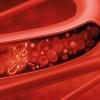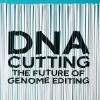An international team of scientists has developed an artificial intelligence (AI) platform that could one day be used in a system to assess vascular diseases that are characterised by the abnormal condition of blood vessels.

The AI-powered platform combines machine learning and a specially designed microfluidic chip with analysis of 2D video images of blood flow and the application of physical laws, to infer how blood flows in 3D.
In tests it accurately predicted blood flow characteristics, such as speed, pressure, and shear stress, which is the stress exerted by the blood flow on the vessel wall.
The ability to determine these characteristics accurately could be a critical support for clinicians in detecting and tracking the progression of vascular diseases since the abnormalities that the platform could spot may indicate the presence or progression of a vascular disease.
The scientists tested it on simulated microaneurysms of the eye, using a microfluidic chip that is smaller than a thumbnail.
When the platform was given images of blood flow in a device that simulates microaneurysms, it successfully predicted the characteristics of blood circulation within it.
Image credit | iStock




